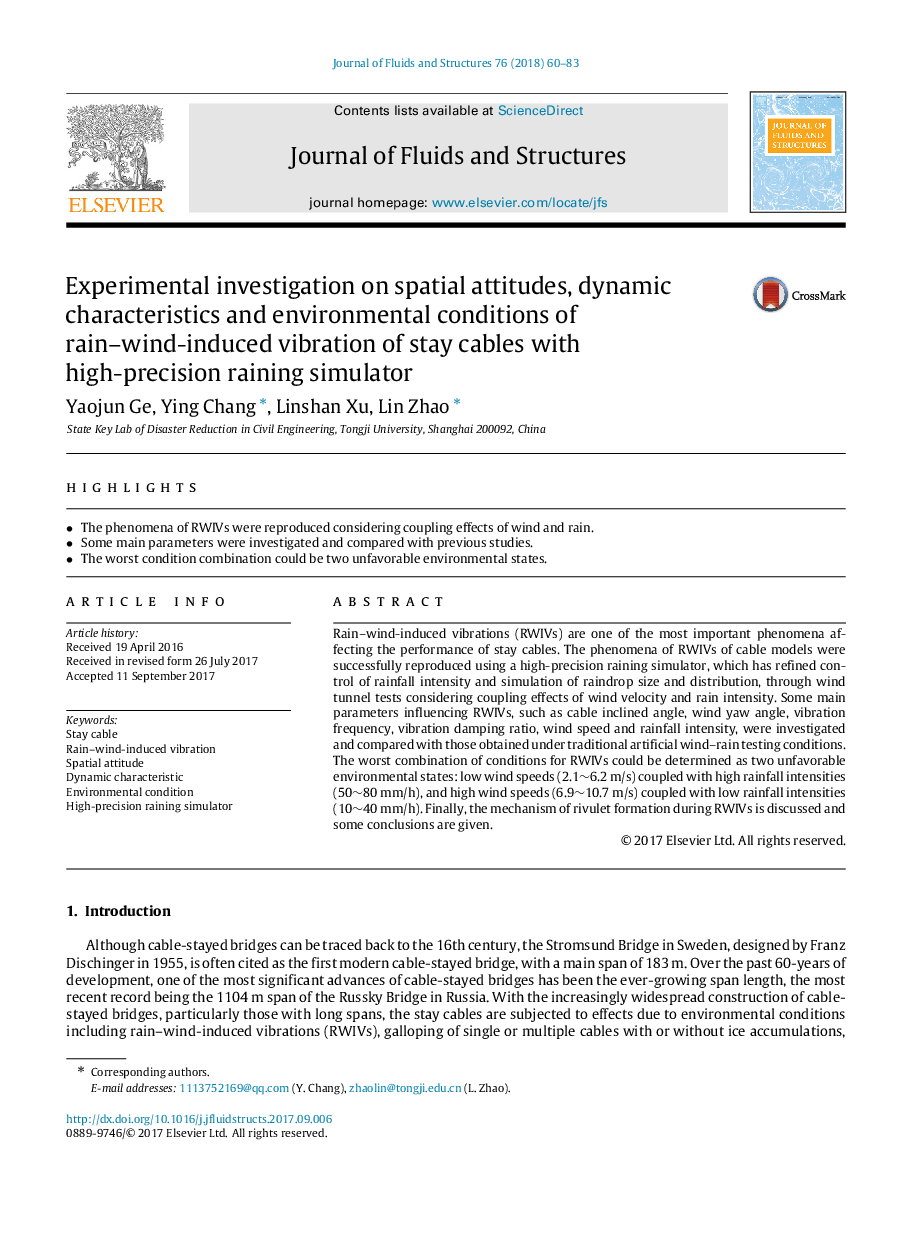| Article ID | Journal | Published Year | Pages | File Type |
|---|---|---|---|---|
| 7175830 | Journal of Fluids and Structures | 2018 | 24 Pages |
Abstract
Rain-wind-induced vibrations (RWIVs) are one of the most important phenomena affecting the performance of stay cables. The phenomena of RWIVs of cable models were successfully reproduced using a high-precision raining simulator, which has refined control of rainfall intensity and simulation of raindrop size and distribution, through wind tunnel tests considering coupling effects of wind velocity and rain intensity. Some main parameters influencing RWIVs, such as cable inclined angle, wind yaw angle, vibration frequency, vibration damping ratio, wind speed and rainfall intensity, were investigated and compared with those obtained under traditional artificial wind-rain testing conditions. The worst combination of conditions for RWIVs could be determined as two unfavorable environmental states: low wind speeds (2.1â¼6.2 m/s) coupled with high rainfall intensities (50â¼80 mm/h), and high wind speeds (6.9â¼10.7 m/s) coupled with low rainfall intensities (10â¼40 mm/h). Finally, the mechanism of rivulet formation during RWIVs is discussed and some conclusions are given.
Related Topics
Physical Sciences and Engineering
Engineering
Mechanical Engineering
Authors
Yaojun Ge, Ying Chang, Linshan Xu, Lin Zhao,
